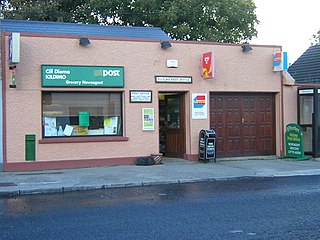The Leaving Certificate Examination, commonly referred to as the Leaving Cert or (informally) the Leaving, is the final exam of the Irish secondary school system and the university matriculation examination in Ireland. It takes a minimum of two years' preparation, but an optional Transition Year means that for those students it takes place three years after the Junior Cycle examination. These years are referred to collectively as "The Senior Cycle". Most students taking the examination are aged 16–19; in excess of eighty percent of this group undertake the exam. The Examination is overseen by the State Examinations Commission. The Leaving Certificate Examinations are taken annually by approximately 60,000 students.
Education in the Republic of Ireland is a primary, secondary and higher education. In recent years further education has grown immensely with 51% of working age adults having completed higher education by 2020. Growth in the economy since the 1960s has driven much of the change in the education system. For universities there are student service fees, which students are required to pay on registration, to cover examinations, insurance and registration costs.
Eleventh grade is the eleventh year of formal or compulsory education. It is typically the third year of high school. Students in eleventh grade are usually 16–17 years of age.
Thomas Walsh was an Irish Fianna Fáil politician who served as Minister for Agriculture from 1951 to 1954. He served as a Teachta Dála (TD) for the Carlow–Kilkenny constituency from 1948 to 1956. He also served as a Senator for the Agricultural Panel from 1943 to 1944.

Ardscoil Rís is a voluntary boys' secondary school on Griffith Avenue, Dublin, Ireland. The school caters for approximately 570 students every year.

Pallaskenry is a village in County Limerick, Ireland.

Salesian College is an 11–18, selective independent Roman Catholic day school in Farnborough, Hampshire, England. Founded in 1901 as a small preparatory school for boys, it soon expanded to provide secondary education owing to its increasing popularity. In November 2022, the school had a total of 634 pupils enrolled, 129 in the Sixth Form. For the 2007–08 academic year, the College announced that it would admit girls into the Sixth Form for the first time.
St MacDara's Community College is a secondary school situated on Wellington Lane in Templeogue, South Dublin. It is run by a board of management appointed by the Dublin and Dún Laoghaire Education and Training Board and the Catholic Archdiocese of Dublin, and including community representatives, and is a non-fee paying school.

Presentation College is a Catholic boys' secondary school established in 1921 by the Presentation Brothers in Bray, County Wicklow, Ireland.
Mungret College was a Jesuit apostolic school and a lay secondary school near Limerick, Ireland. Located on the western outskirts of the modern-day suburban town of Raheen, it was operational from 1882 until 1974 when it closed as a school for the last time. The college produced over 1000 priests in that period. It had previously been an agricultural college and a Limerick diocesan seminary until 1888.

Salesian College Celbridge is a secondary school catering for male students aged 12–19 around the town of Celbridge in County Kildare, Ireland. As of 2023, the school reportedly had over 700 students and 50 staff.

Kildimo is a village in County Limerick, Ireland. The village is located on the N69 National Route about 13 km west of Limerick city close to the River Shannon estuary. The population was 417 at the 2016 census.
Ardscoil La Salle, "De La Salle' or "The Della" as it is referred to by staff and students, is a co-educational voluntary Catholic secondary school located on the Raheny Road in Raheny, Dublin, Ireland.

Coláiste Phádraig is a Christian Brothers secondary school for boys in Lucan, County Dublin, Ireland. It is located in an estate called Roselawn with a relatively large campus that includes three basketball courts, two football pitches, a large school building and a modern sports hall which includes a school gym. Coláiste Phádraig is part of the Edmund Rice Trust schools.
St Patrick's High School is a Roman Catholic non-selective, mixed secondary school in Keady, County Armagh, Northern Ireland that was founded in 1970 by the De La Salle Brothers.
Pallaskenry Agricultural College, officially the Salesian Agricultural College, is a private college which provides training for farmers, mechanics and salespeople for the agricultural and farm machinery industries. It is located in Pallaskenry, County Limerick, Ireland, and is owned and managed by the Salesian Fathers. The college is co-located with Salesian Secondary College. The Salesians also previously ran an agricultural and horticultural college at Warrenstown College in County Meath.
Warrenstown College was an agricultural and horticultural college run by the Salesian congregation, in Drumree, County Meath.

On 12 March 2020, all schools, colleges, and childcare facilities in the Republic of Ireland were shut down in response to the COVID-19 pandemic. The shutdown resulted in the cancellation of the 2020 Leaving Certificate and 2020–2021 Junior Certificate examinations, as well as all 2020–2021 Irish language summer courses in the Gaeltacht.








